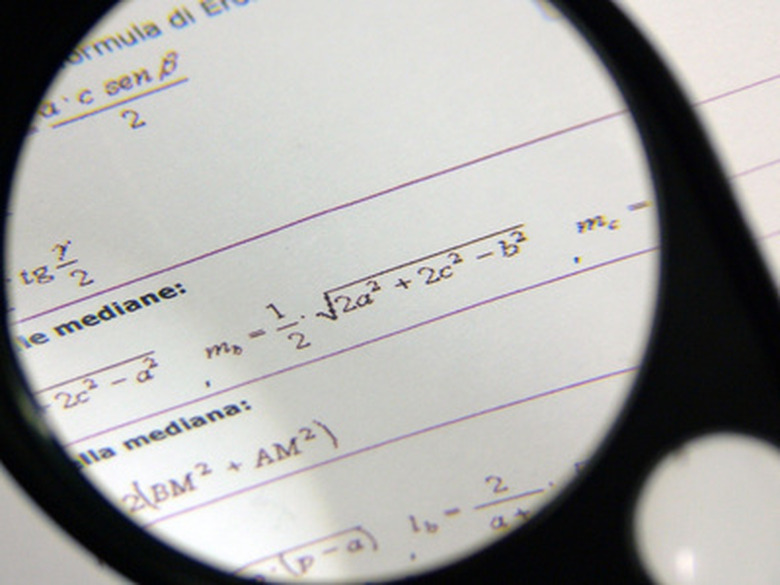How To Calculate The Mean In A Probability Distribution
A probability distribution represents the possible values of a variable and the probability of occurrence of those values. Arithmetic mean and geometric mean of a probability distribution are used to calculate average value of the variable in the distribution. As a rule of thumb, geometric mean provides more accurate value for calculating average of an exponentially increasing/decreasing distribution while arithmetic mean is useful for linear growth/decay functions. Follow a simple procedure to calculate an arithmetic mean on a probability distribution.
Step 1
Write down the variable and the probability of the variable to occur in the form of a table. For example, the number of shirts sold by a store can be described by the following table where "x" represents the number of shirts sold every day and "P(x)" represents the probability of each event. x P(x) 150 0.2 280 0.05 310 0.35 120 0.30 100 0.10
Step 2
Multiply each value of x with the corresponding P(x) and store the values in a new column. For example: x P(x) x*P(x) 150 0.2 30 280 0.05 14 310 0.35 108.5 120 0.30 36 100 0.10 10
Step 3
Add the result from all the rows of the third column in the table. In this example, arithmetic mean = 30+14+108.5+36+10 = 198.5.
For the example, arithmetic mean gives an average value for the total number of shirts sold on daily basis.
Warning
Generally, the term "mean" refers to "arithmetic mean." So use the calculations for arithmetic mean unless specifically asked to do otherwise.
Cite This Article
MLA
Cheema, Muhammad. "How To Calculate The Mean In A Probability Distribution" sciencing.com, https://www.sciencing.com/calculate-mean-probability-distribution-6466583/. 24 April 2017.
APA
Cheema, Muhammad. (2017, April 24). How To Calculate The Mean In A Probability Distribution. sciencing.com. Retrieved from https://www.sciencing.com/calculate-mean-probability-distribution-6466583/
Chicago
Cheema, Muhammad. How To Calculate The Mean In A Probability Distribution last modified March 24, 2022. https://www.sciencing.com/calculate-mean-probability-distribution-6466583/
